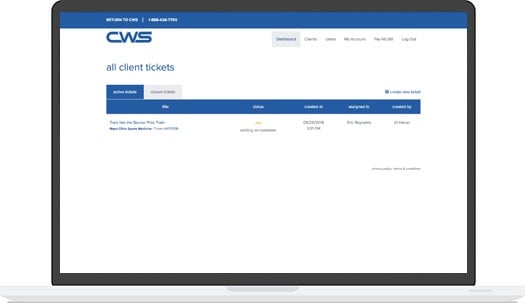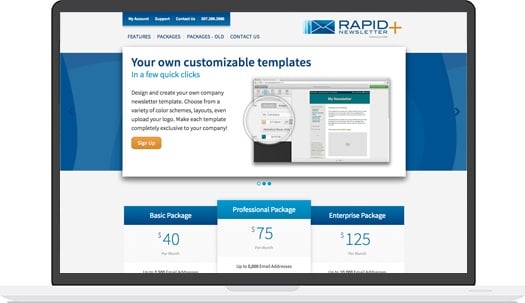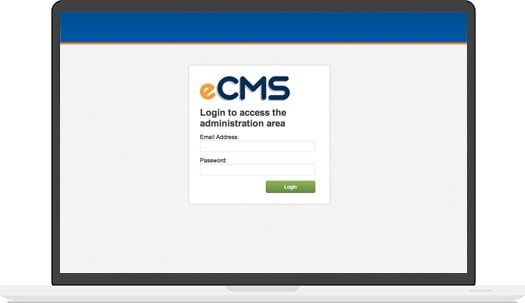The Americans with Disabilities Act (ADA) was developed in 1990 and is meant to ensure that people with disabilities have the same opportunities as anyone else. This means any businesses that serve the public must make sure their building accommodates people with disabilities of various kinds. And now that the internet is so widely used, ADA compliance also applies to websites and even mobile apps. Basically, this means that your website needs to be accessible to people who have disabilities that affect their hearing, vision or physical capacities.
Recently, a ruling has been passed declaring the official standard of website accessibility for businesses. Title III of the ADA has mandated that all “places of public accommodation” are required by law to remove any “access barriers” that would inhibit a person with disabilities from accessing the business’ goods or services.
If you’re not sure if your website is ADA compliant and you’re wondering if it’s worth looking into, these advantages of doing so may convince you.
1) ADA Compliance Increases Your Target Audience
If your website is not already ADA compliant, you are automatically missing out on millions of potential customers who cannot access your site due to their disabilities. In fact, there are nearly 50 million people with disabilities in the U.S., which means about 19 percent of this country has a disability. Many of them might be interested in your products or services, but once they arrive at your website, they won't be able to navigate easily enough to buy anything or even contact you, all because your website is only accessible to people without disabilities. Thus, they may move on to your competitors.
Download the 22 Website Hacks To Drive Traffic, Leads & Sales Free eBook
For instance, if you have a video that displays the benefits of your product, but it doesn’t have captions, then people who are deaf or hard of hearing will not get to find out how great your product is. The same goes for when you have images with no alternate text. The point of the alternate text is to allow screen reading tools to describe the image to someone who is blind, so if you don’t have that text, some of your audience will miss out. Similarly, it’s important to ensure your website is fully accessible without a mouse so that people with physical limitations can use it.
2) ADA Compliance Improves Your SEO Efforts
Now more than ever, search engines are evolving to crawl pages with more human intention. A key element of WCAG is accessibility to screen readers, and these readers crawl your website pages similarly to search engines. If your website meets the Web Content Accessibility Guidelines, it will likely appeal to users, search engines, and screen readers alike, ultimately improving your SEO endeavors. For this reason, meta tagging, alternative image text, and video transcripts should be seriously considered.
3) ADA Compliance May Help Your Reputation
The fact that an ADA compliant website can increase your target audience by millions is just one reason to make your site more accessible. Another benefit is that not only will you get more customers, but those customers will also know how valuable they are to your business. After all, they might have gone to a few other websites that were not ADA compliant, disappointed each time that they couldn’t access the content, until they got to your website.
And once those new customers tell their friends and relatives how they found your website, more people will know you made sure to make it ADA compliant. The fact that you put this effort into ensuring everyone was included will set you apart from your competitors. Therefore, making your site ADA compliant is a great way to get some positive press for your business.
4) ADA Compliance Means Overall Better Website Usability
Creating a more operable and navigable website will ultimately benefit all users while still meeting WCAG guidelines. Making your web pages easier to comprehend will allow everyone - disabled or non - to find what they’re looking for quickly. If you decide to follow the guidelines, your website will likely convert more leads across the board because users will trust that they can always easily find the content they need.
5) You Can Avoid Penalties
The text in the ADA did not originally mention websites since this technology was not widely used in 1990. But now that most businesses have a website, they need to make sure it’s accessible to everyone. Since we’re past the ruling date, all updated pages on your website are required to be at least grade A complaint, with grade AAA being the highest.
Dozens of esteemed brands have been hit with significant lawsuits in recent years, before the guidelines were even set in stone. Businesses including Fordham University, Foot Locker, Brooks Brothers, and even Kylie Jenner have been sued for the lack of ADA compliant websites.
Currently, there is a safe harbor clause that allows your existing content to remain as it is, unless altered after January 18, 2018. However, the guidelines do pertain to any page that has been updated after that date. So if you want to avoid the legal costs of being found non-compliant with the ADA, it’s best to make the necessary changes to your website now.
If you’re unsure where to get started, the ADA's website has some tips. You can also contact a web design agency to find out if your website is currently ADA compliant and how you can change it if it’s not.

.jpg?t=1533315998368) How-To Articles
How-To Articles Support Portal
Support Portal Webmail
Webmail Rapid Newsletter+
Rapid Newsletter+ eCMS
eCMS


 Alex Slack is a Project Manager and Content Creator. Her magic formula for marketing success is summarized by the 3Cs: communication, creativity, and care. She will help manage your project from the initial brainstorm session, to the height of your campaign and beyond. Let Alex guide you and help simplify this crazy world of digital marketing!
Alex Slack is a Project Manager and Content Creator. Her magic formula for marketing success is summarized by the 3Cs: communication, creativity, and care. She will help manage your project from the initial brainstorm session, to the height of your campaign and beyond. Let Alex guide you and help simplify this crazy world of digital marketing!
